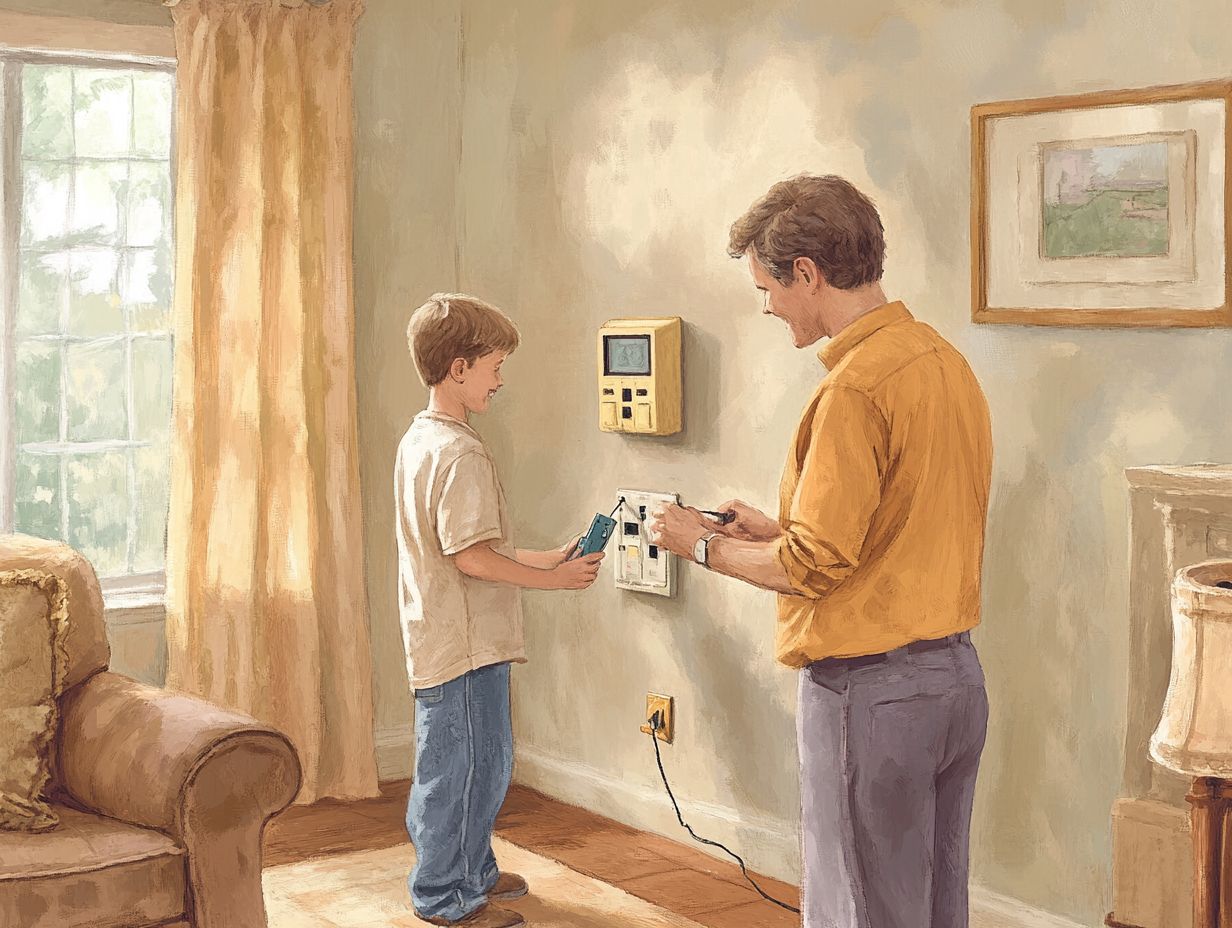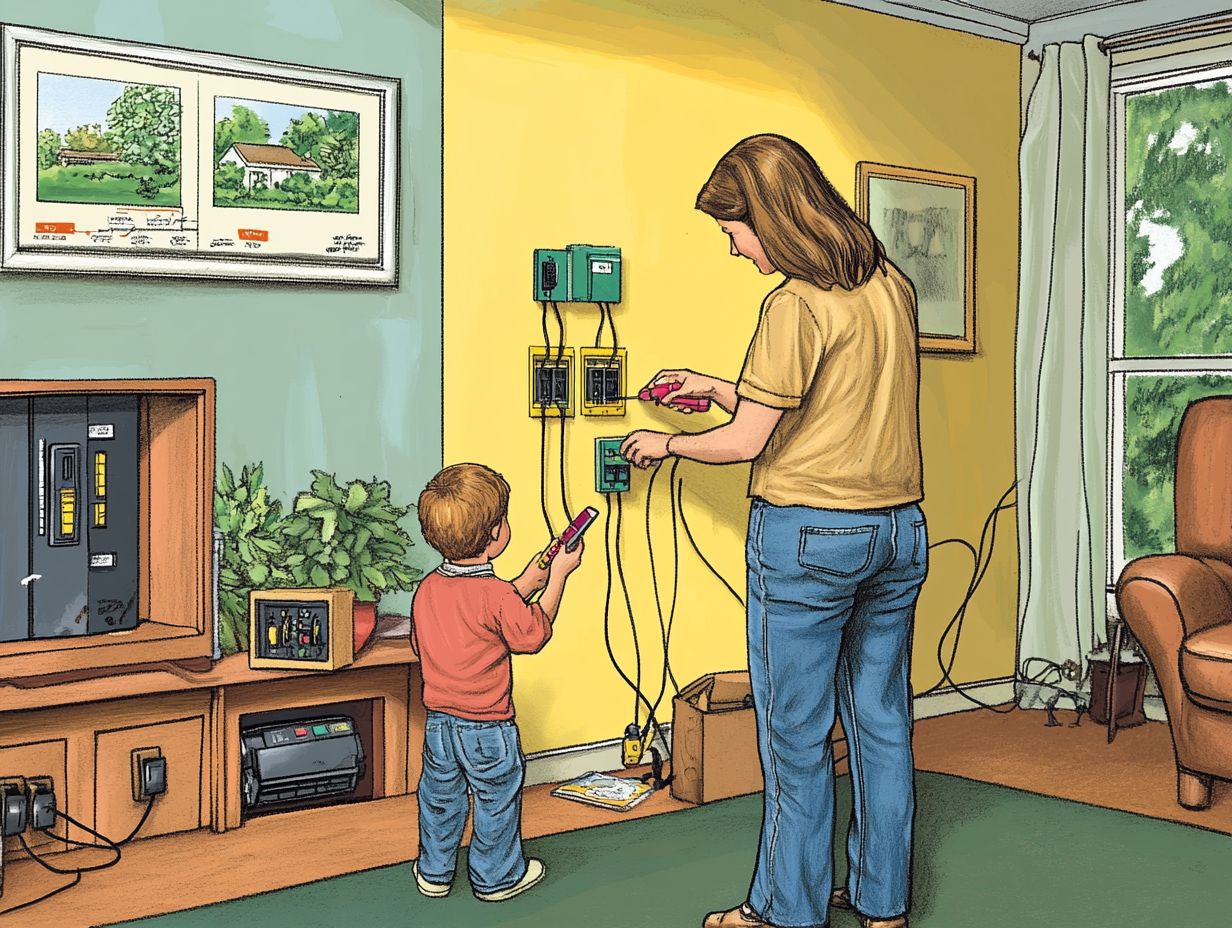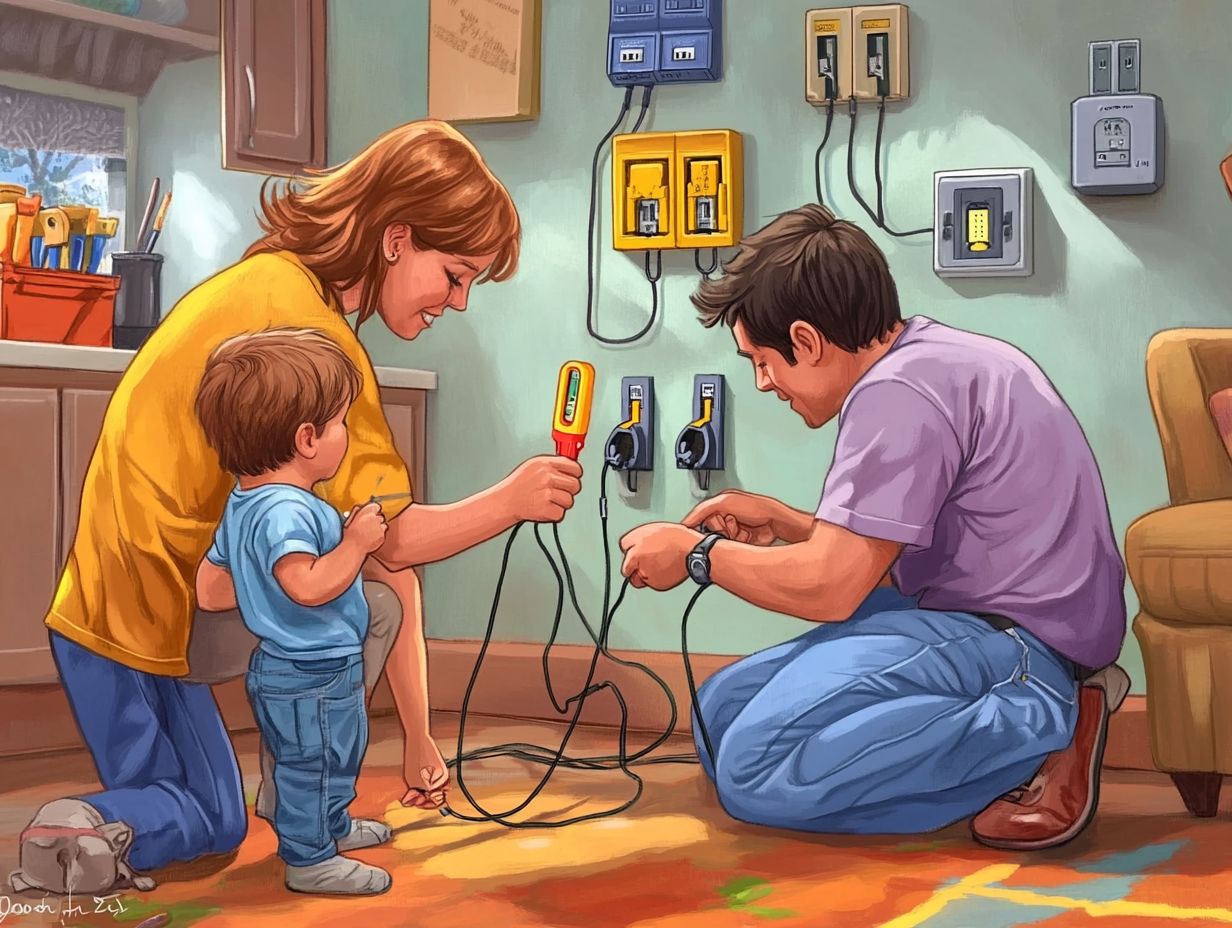Electrical safety and home safety are essential components of ensuring a secure home environment. is an essential component of ensuring a secure home environment. By understanding the risks involved and implementing preventive measures, individuals can protect themselves and their loved ones from understanding the risks involved and implementing preventive measures, individuals can protect themselves and their loved ones from potential hazards and electrical hazards.
This article delves into common electrical dangers, outlines best practices for accident prevention, and emphasizes the significance of professional installation. Additionally, it discusses the importance of regular inspections to maintain home safety and provides guidance on the steps to take in case of an emergency.
Staying informed is key to keeping your home safe.
Understanding Electrical Safety

Understanding electrical safety is vital for maintaining a safe living environment. It involves a range of practices and guidelines designed to protect individuals and their homes from electrical hazards like shocks and fires.
By adhering to recommended safety measures, conducting Additionally, it discusses the importance of regular electrical inspections and Homeowners should consider conducting safety audits to identify potential hazards and ensure that safety protocols are being followed. to maintain home safety., and following established safety standards, homeowners can greatly minimize the risk of electrical accidents. This not only enhances safety but also contributes to a more secure home.
In this section, we will explore the importance of electrical safety and highlight key practices that contribute to a safer living space.
What is Electrical Safety and Why is it Important?
Electrical safety encompasses a set of practices aimed at preventing electrical hazards and ensuring the safe operation of electrical systems and devices in our homes. This is crucial because electrical accidents can result in serious injuries or even fatalities, along with significant property damage caused by electrical fires. By prioritizing electrical safety, individuals can reduce risks and enhance overall safety within their homes.
In fact, studies indicate that nearly 50,000 electrical fires occur each year in the United States, leading to over $1.3 billion in property damage. Understanding how to use electrical appliances correctly is essential; this includes checking that cords are not frayed, outlets are not overloaded, and that smoke detectors are tested regularly.
Implementing basic Implementing basic fire prevention strategies can greatly diminish risks and enhance electrical safety awareness. strategies, such as keeping flammable materials away from heat sources and investing in Implementing basic fire prevention strategies, such as keeping flammable materials away from heat sources and investing in surge protectors, can greatly diminish risks., can greatly diminish risks. By cultivating a culture of By cultivating a culture of safety awareness and staying informed about potential hazards, homeowners can take proactive steps to protect their homes. and staying informed about potential hazards, individuals can take proactive steps to protect their homes from preventable electrical incidents.
Common Electrical Hazards in the Home
Identifying common electrical hazards in the home is a crucial step in enhancing overall safety. These hazards can stem from several sources, such as faulty wiring, overloaded circuits, and improperly installed electrical devices.
By being aware of these risks, homeowners can take important precautions, such as performing regular electrical inspections and following wiring This section will highlight the key electrical hazards and discuss effective This section will highlight the key electrical hazards and discuss effective safety guidelines to help mitigate these risks. to help mitigate these risks.. This section will highlight the key electrical hazards and discuss effective safety measures to help mitigate these risks.
Identifying Potential Dangers

To create a safe living environment, homeowners need to be adept at identifying potential electrical hazards within their homes. Common dangers include exposed wires, ungrounded electrical outlets, and appliance cords that exhibit signs of wear and tear. Understanding these risks is crucial for implementing effective safety measures and conducting thorough risk assessments to prevent accidents.
Regularly inspecting electrical outlets is essential. Homeowners should be on the lookout for any discoloration or heat coming from the outlets, as these could indicate underlying issues. Additionally, checking appliance cords for fraying or loose connections is vital in preventing electrical fires. Ensuring that each outlet is properly grounded can significantly lower the risk of electrical shocks.
While performing risk assessments, homeowners should also evaluate their While performing risk assessments, homeowners should also evaluate their By remaining vigilant and proactive regarding electrical load management, individuals can effectively reduce hazards and cultivate a safer home environment. to avoid using multiple high-wattage devices on a single outlet.. It is advisable to avoid using multiple high-wattage devices on a single outlet to minimize strain. By remaining vigilant and proactive regarding Engaging in regular electrical maintenance not only enhances safety but also improves the energy efficiency of electrical systems., individuals can effectively reduce hazards and cultivate a safer home environment.
Preventing Electrical Accidents
Preventing electrical accidents necessitates a proactive approach that involves implementing a range of safety measures specifically designed for the home environment.
Important strategies include:
- Utilizing Important strategies include utilizing overload protection devices and ensuring that electrical outlets are childproofed to safeguard vulnerable individuals. devices
- Installing smoke detectors
- Ensuring that electrical outlets are childproofed to safeguard vulnerable individuals
By following these practices, homeowners can markedly reduce the risk of accidents and improve overall safety within their living spaces.
Best Practices for Safety
Implementing best practices for electrical safety is crucial for protecting both your home and your family from potential hazards. This involves ensuring that electrical systems are properly grounded, using This involves ensuring that electrical systems are properly grounded and using circuit breakers to prevent overloads. to prevent overloads, and maintaining a comprehensive It can be quite beneficial to develop a detailed home safety checklist that includes these practices and invites family members to participate in the process.. By adhering to these best practices, homeowners can create a safer living environment and reduce the risks associated with electrical hazards.
To start, regularly testing circuit breakers is important. This practice ensures that they will respond effectively when currents exceed safe levels, helping to prevent dangerous situations. Grounding techniques also play a vital role; they provide a pathway for electrical currents, redirecting any excess safely into the ground and preventing shocks.
Additionally, homeowners should conduct routine inspections of outlets, switches, and appliances to check for signs of wear or damage. It can be quite beneficial to develop a detailed safety checklist that includes these practices and invites family members to participate in the process. This collaborative approach not only enhances awareness but also reinforces proactive safety measures throughout the household.
Ensuring Proper Electrical Installation

Ensuring proper electrical installation is essential for maintaining a safe and efficient home environment. This process requires adherence to established electrical codes and safety regulations that govern the installation of wiring, outlets, and electrical panels.
It is highly advisable to engage professional electricians for any electrical work. Their expertise not only ensures compliance with electrical code standards but also significantly reduces the risks often associated with DIY electrical projects.
Importance of Professional Installation
The significance of professional installation in ensuring electrical safety within residential environments cannot be emphasized enough. Professional electricians possess the training and expertise to navigate the complexities of electrical systems, ensuring that installations are completed safely and in accordance with safety regulations and electrical codes. This approach not only improves the performance of electrical systems but also greatly minimizes the risk of electrical accidents over time.
Their extensive training enables them to identify potential hazards and implement necessary precautions, which is essential for maintaining a safe home environment. While relying on DIY methods may seem like a cost-effective option initially, it often leads to errors that could result in serious injuries or expensive repairs later on.
By choosing to engage seasoned professionals, homeowners can have confidence that their installations are not only compliant but also optimized for long-term reliability. Additionally, many professionals offer warranties on their work, providing further assurance and enhancing the overall value of the property.
Maintaining Electrical Safety in the Home
Maintaining electrical safety in the home is an ongoing responsibility that requires regular maintenance and inspections. Homeowners should consider conducting periodic safety audits to identify potential hazards and ensure that This proactive approach not only helps prevent electrical accidents but also enhances energy efficiency and reliability within electrical systems while ensuring that safety protocols are followed. are being followed.
This proactive approach not only helps prevent electrical accidents but also enhances energy efficiency and reliability within electrical systems.
Regular Inspections and Maintenance

Conducting regular inspections and maintenance is essential for ensuring electrical safety in the home. This process includes checking electrical devices, testing This process includes checking electrical devices, testing GFCI outlets, and implementing safety checklists that guide homeowners in identifying potential issues., and implementing safety checklists that guide homeowners in identifying potential issues.
Engaging in regular maintenance not only enhances safety but also improves the energy efficiency of electrical systems.
Homeowners should make it a priority to inspect wiring in both outlets and appliances for any signs of wear or damage. This is a critical task, as frayed wires can present significant hazards.
Additionally, periodically evaluating circuit breakers and fuses is important for maintaining the overall reliability of the electrical system. Utilizing a comprehensive safety checklist can simplify these inspections by providing reminders for important tasks, such as verifying grounding connections and assessing the condition of Utilizing heavy-duty extension cords is important for avoiding electrical overload and ensuring safety..
By prioritizing these crucial maintenance activities, individuals can reduce risks and extend the lifespan of their electrical systems, ultimately fostering a secure and efficient home environment.
Emergency Preparedness for Electrical Accidents
Emergency preparedness for electrical accidents is an essential aspect of home safety that every homeowner should take seriously. When faced with electrical shocks or burns, having a clear understanding of how to respond quickly can truly be the difference between safety and potential disaster.
This section will explore effective emergency preparedness strategies designed to equip homeowners with the confidence to act decisively during electrical incidents, ultimately enhancing safety awareness and preparing them for emergency services involvement if needed.
Steps to Take in Case of an Emergency
Understanding the appropriate steps to take during an electrical emergency can greatly reduce associated risks. Homeowners should familiarize themselves with emergency procedures, such as shutting off power at the electrical service panel and contacting professional electricians immediately. Implementing emergency lighting and safety signs can further enhance awareness and preparedness during such incidents.
It is essential to act swiftly, as even minor electrical issues can escalate rapidly. Homeowners should conduct regular inspections of their electrical systems for signs of wear, such as flickering lights or unusual odors, which may indicate larger problems on the horizon.
In case of an emergency, turning off the main breaker can help prevent further hazards, particularly if hazardous materials like water are involved. Developing a clear communication plan with family members ensures that everyone is prepared to respond effectively.
Prioritizing safety measures not only protects property but also safeguards personal well-being, underscoring the importance of seeking professional assistance when uncertain.




